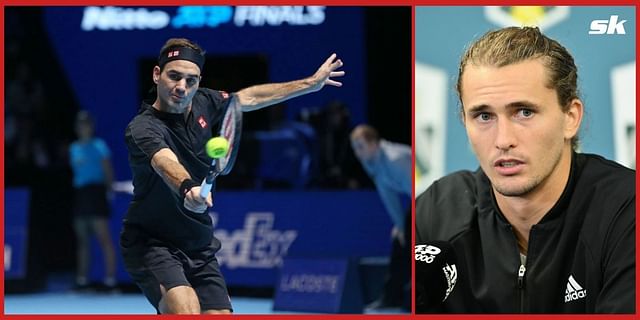
After his victory over Andrey Rublev at the 2024 ATP Finals, Alexander Zverev delved into a discussion about the evolution of court surfaces since the days when Swiss icon Roger Federer was still an active competitor. The German tennis star showcased an impressive serving performance, defeating Rublev in straight sets on Tuesday, November 12. However, during his post-match press conference, Zverev expressed his dissatisfaction with the current pace of the courts, lamenting the loss of the variety that once characterized tennis surfaces.
Reflecting on the past, Zverev pointed out how noticeable the differences used to be between various court types. He recalled a time when the contrasts between clay courts, hard courts, and indoor hardcourts were far more pronounced. For Zverev, this distinction was an integral part of the game, and he now finds himself missing it.
“I think when Roger Federer was still on tour, it was very different. There was big, big differences between a clay court, a hard court, and an indoor hard court. I’m missing that right now a little bit,” Zverev remarked. He spoke nostalgically of those years, emphasizing how much he valued the unique challenges posed by different surfaces. According to Zverev, this variability demanded greater adaptability and strategic thinking from players.
The former ATP Finals champion elaborated on his observations by pointing to specific tournaments. He highlighted the stark contrast between the courts at Indian Wells and those at the Canadian and Shanghai Masters. Until recently, these tournaments offered vastly different playing experiences. Zverev believes that the standardization of court speeds has led to a loss of some of the sport’s essence.
“I’m missing a little bit the differences in surfaces because before there was a clear difference between a clay court and outdoor hard courts,” Zverev explained. “Some were very slow like in Indian Wells, but some were very fast, like Canada was always very fast, Shanghai was always very fast.” The German feels that the homogenization of court speeds has led to a loss of diversity in the playing styles that once made tennis more unpredictable and exciting.
Zverev’s lamentation extended to indoor hard courts as well. He expressed his disappointment over the trend to make surfaces more similar, which he believes dilutes the unique characteristics of the game. “And indoor hard courts. I think we lost that a little bit by trying to make all the surfaces very similar and almost the same,” he noted.
Turning his attention back to the courts at the 2024 ATP Finals, Zverev offered a candid assessment of their speed. He described them as being particularly slow for an indoor hardcourt. Despite this, the German was quick to clarify that it did not pose a significant problem for him personally. “Back to the surface,” Zverev said. “The surface is very slow. It’s too slow for an indoor hard court. I’m not complaining because I like slow surfaces, I like fast surfaces. I don’t really care too much.”
Yet, even while downplaying the impact on his own performance, Zverev could not help but reflect on what he sees as a troubling trend. He singled out the courts at Cincinnati and Paris Bercy as two of the few exceptions on this year’s Tour, where the surfaces maintained a faster pace. For Zverev, these tournaments stand as reminders of what has been lost in the pursuit of uniformity.
“I think in tennis right now, we’re missing game styles a little bit,” Zverev commented. He attributed this to the lack of diversity between clay and hard courts, noting that they have become “almost the same speed.” This, he argued, diminishes the range of styles and tactics that players can bring to the court. “The reason why is because I think clay courts and hard courts, they’re all pretty much the same. They’re almost the same speed, with the exception of two tournaments this year, with the exception of Cincinnati and of Paris Bercy, because they’re faster.”
Zverev’s remarks highlight a broader conversation within the tennis community about how the sport should evolve. While some players appreciate the consistency of modern surfaces, others, like Zverev, see value in preserving the unique characteristics of each type of court. For Zverev, this diversity is essential not only for the players but for the fans who enjoy watching a wide range of strategies and skills on display.
As Zverev continues his campaign at the ATP Finals, he finds himself in a challenging group that includes Carlos Alcaraz and Casper Ruud. The German will need to adapt his game to overcome these formidable opponents, but his reflections on court surfaces suggest that, for him, the true challenge lies beyond any individual match. It’s about preserving the unique identity of the sport he loves—a sport where every surface once offered a distinct and thrilling test.
Leave a Reply